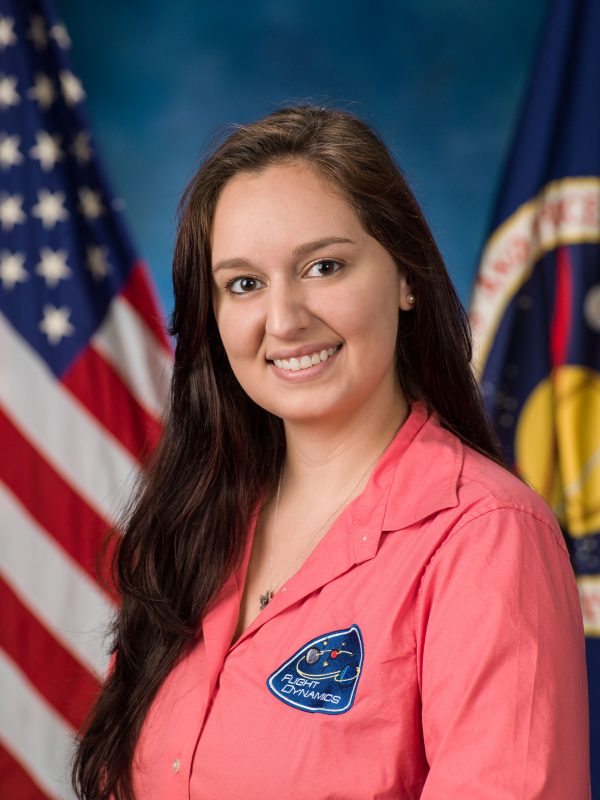Stephanie grew up watching space shuttle launches on TV and visiting Space Center Houston as often as she could. She always knew she wanted to work at NASA, and now she does. As a visiting vehicles officer, Stephanie coordinates rendezvous and departures of any visiting vehicles that go to the International Space Station. If you’ve seen a NASA movie, you’re familiar with Mission Control and the people at the big desk on Earth sharing information with those in space – that’s what Stephanie does.
Stephanie is also a certified flight controller and part of a mentorship program at NASA. Students come in and NASA employees guide them through a project. Stephanie often tries to pick groups with multiple women. “I just want to show a presence as female in NASA,” she explained. “Just showing that women can advance and be high up here is important.”
While Stephanie’s parents were incredibly supportive of her desire to work for NASA and study aerospace engineering. “I wouldn’t be where I am today without my amazingly supportive parents who pushed me so hard,” Stephanie said. Sadly, not everyone she encountered was as encouraging. In college, she said it was difficult being one of the only females in the aerospace program. Many of the men in her program were dismissive of her abilities. The professors shot down that behavior when they saw it, but Stephanie often stood up for herself.
“I just want to show a presence as female in NASA. Just showing that women can advance and be high up here is important.”
Stephanie Anderson
At one point during her senior design project, the male team captain handed her a broom and told her to clean up the machine shop while the men worked. Stephanie refused to be humiliated and ended up being one of the highest contributing members of her team and pushed them to compete at a national competition where they won third place.
Now, Stephanie is thriving at NASA and working hard to help women rise with her and show that it is possible for a woman to work at NASA. “I am motivated by all of the little girls I want to encourage to pursue careers in STEM,” she said. She’s also trying to be a positive role model to her two-year-old daughter and immerse her in STEM.
Her daughter is in the NASA day care, which is very STEM focused and even at her age, she’s working on science projects. “I don’t want to force it on her,” Stephanie explained, “I just want her to know that she has options and she’s encouraged to pursue that if she wants. I want my daughter, and every little girl with a dream, to know that no matter how large your dream is, it is always possible to achieve it. I am proof of that! I’ve had my obstacles being a woman in a professional field dominated by men. But no obstacle is too great for a passionate woman with a dream to achieve.”

